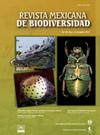Temporal variation of a plant-floral visitor network in a temperate forest in Michoacán, Mexico
IF 0.9
4区 环境科学与生态学
Q4 BIODIVERSITY CONSERVATION
引用次数: 0
Abstract
The ecological network approach allows the analysis of interactions between plant communities and their floral visitors. However, most floral visitation network studies analyze the interactions with a temporally-static perspective. Hence, few studies have evaluated the temporal variation of these systems. This study characterized the plant-floral visitor interaction network of a temperate forest remnant in Michoacán, analyzing monthly changes in its composition, structure, and dynamics during 3 seasons of the year. In total, we recorded 1,325 floral visits and 131 links between 27 plant species and 74 floral visitor species. Most of the plant species observed belong to the families Lamiaceae, Asteraceae, and Apiaceae, while most of the floral visitor species observed belong to the orders Hymenoptera, Lepidoptera, and Diptera. Most of the floral visits were recorded in highly abundant plant species with longer flowering periods at the study site. The constant species turnover gave rise to monthly plant-floral visitor networks with different levels of specialization, connectance, nestedness, and modularity. Our results suggest that plant-floral visitor networks in temperate forest remnants are highly dynamic and poorly connected, which makes them vulnerable to drastic changes in the environment.墨西哥Michoacán温带森林植物-花卉访客网络的时间变化
生态网络方法允许分析植物群落和它们的花卉来访者之间的相互作用。然而,大多数花卉访问网络研究都是从时间静态的角度来分析相互作用的。因此,很少有研究评估这些系统的时间变化。研究了Michoacán温带森林遗址植物-花卉游客互动网络的特征,分析了其组成、结构和动态在一年中的三个季节的月变化。我们共记录了1325种花卉访问,并在27种植物和74种花卉访问者之间建立了131个联系。观察到的植物种类多属紫叶科、菊科和蜂科,而观察到的访花种类多属膜翅目、鳞翅目和双翅目。在研究地点,大部分花的访问记录是高度丰富的植物物种,开花时间较长。持续的物种更替产生了具有不同专业化、连通性、筑巢性和模块化水平的每月植物-花卉游客网络。研究结果表明,温带森林遗迹中的植物-花卉游客网络具有高度动态性和低关联性,容易受到环境剧烈变化的影响。
本文章由计算机程序翻译,如有差异,请以英文原文为准。
求助全文
约1分钟内获得全文
求助全文
来源期刊

Revista Mexicana de Biodiversidad
环境科学-生物多样性保护
CiteScore
1.50
自引率
11.10%
发文量
69
审稿时长
12-24 weeks
期刊介绍:
Revista Mexicana de Biodiversidad appears in 4 issues per year and publishes the products of original scientific research regarding biodiversity of the Americas (systematics, biogeography, ecology and evolution), as well as its conservation and management.
The journal ensures high standards with a system of external peer review, and is included in the list of excellence of journals of the National Council of Science and Technology (CONACyT, Mexico). It is currently included in ASFA, Biological Abstracts, Biological Sciences, Latindex Periódica, RedALyC, Web of Science (Thomson Reuters), SciELO, SCOPUS, and Zoological Records.
 求助内容:
求助内容: 应助结果提醒方式:
应助结果提醒方式:


